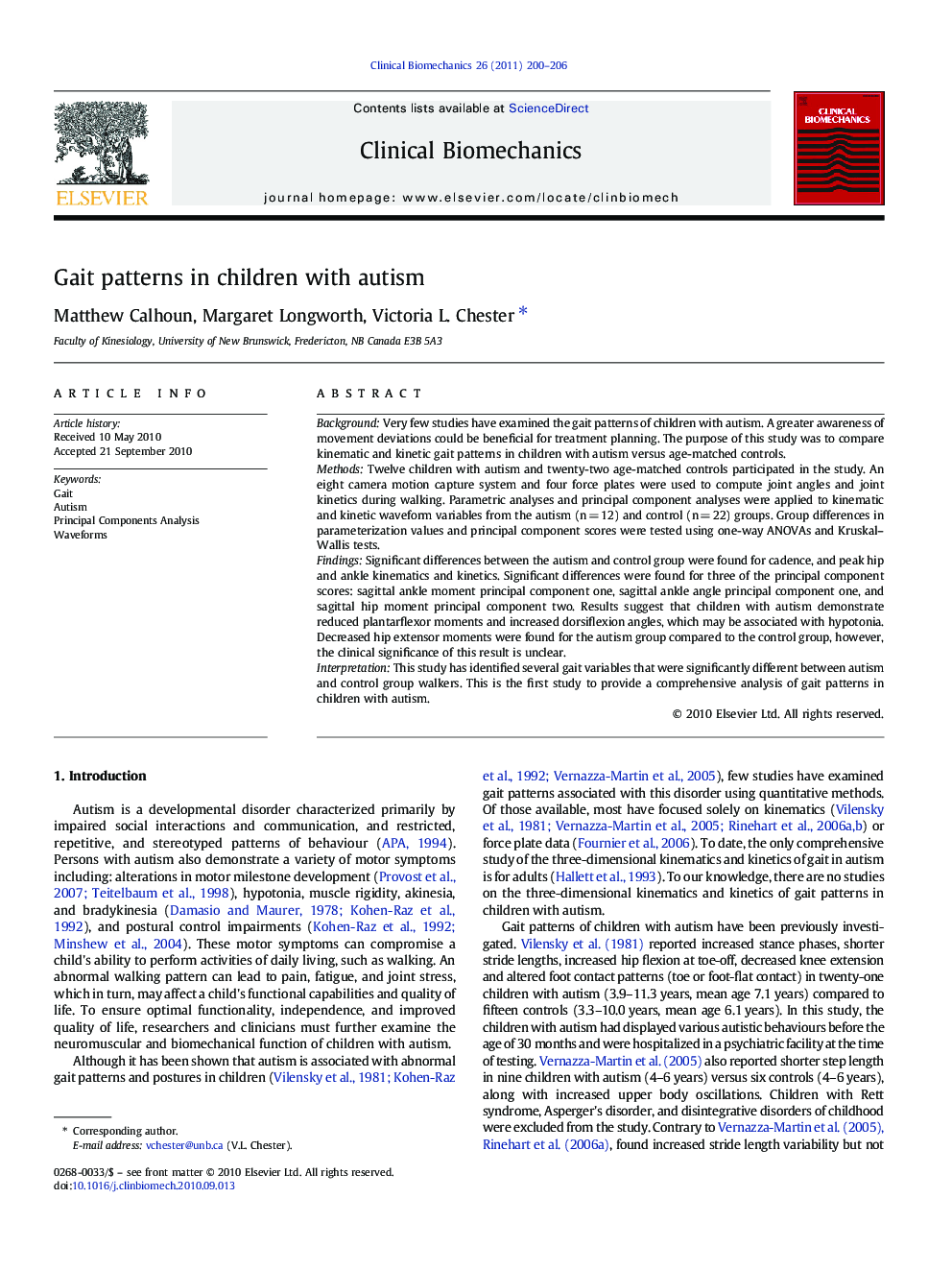| Article ID | Journal | Published Year | Pages | File Type |
|---|---|---|---|---|
| 4050872 | Clinical Biomechanics | 2011 | 7 Pages |
BackgroundVery few studies have examined the gait patterns of children with autism. A greater awareness of movement deviations could be beneficial for treatment planning. The purpose of this study was to compare kinematic and kinetic gait patterns in children with autism versus age-matched controls.MethodsTwelve children with autism and twenty-two age-matched controls participated in the study. An eight camera motion capture system and four force plates were used to compute joint angles and joint kinetics during walking. Parametric analyses and principal component analyses were applied to kinematic and kinetic waveform variables from the autism (n = 12) and control (n = 22) groups. Group differences in parameterization values and principal component scores were tested using one-way ANOVAs and Kruskal–Wallis tests.FindingsSignificant differences between the autism and control group were found for cadence, and peak hip and ankle kinematics and kinetics. Significant differences were found for three of the principal component scores: sagittal ankle moment principal component one, sagittal ankle angle principal component one, and sagittal hip moment principal component two. Results suggest that children with autism demonstrate reduced plantarflexor moments and increased dorsiflexion angles, which may be associated with hypotonia. Decreased hip extensor moments were found for the autism group compared to the control group, however, the clinical significance of this result is unclear.InterpretationThis study has identified several gait variables that were significantly different between autism and control group walkers. This is the first study to provide a comprehensive analysis of gait patterns in children with autism.
